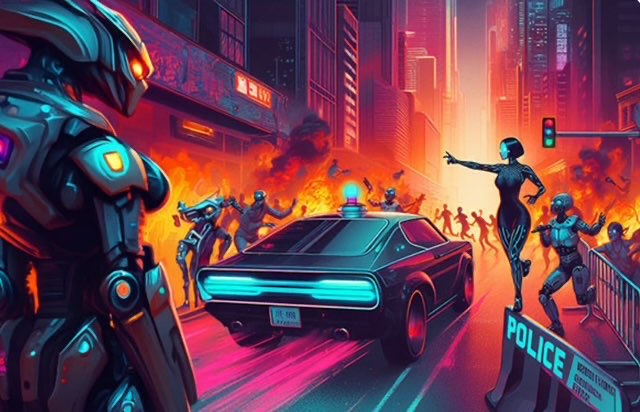Turning Panic into Policy: How Threatcasting Bridged the Gap Between Public Imagination and Civic Action at SXSW
- Threatcasting.ai

- Apr 8
- 2 min read
In an unprecedented collaboration between public creatives and policymakers, Threatcasting.ai joined forces with SXSW 2025 and the U.S. Conference of Mayors (USCM) to stage a bold experiment in participatory foresight. The result? A vivid demonstration of how imaginative storytelling and speculative scenarios can directly inform municipal resilience planning in the face of compounding crises—both real and imagined.
At the heart of this project was a deceptively simple but powerful idea: involve everyday people in imagining the future’s worst days, then bring in the people who might one day have to manage those disasters to engineer real-world solutions.
Over the course of two days, we ran a split-session adaptation of the Threatcasting methodology. Day 1 at SXSW brought together creatives, technologists, policy enthusiasts, and concerned citizens to create fictional personas caught in realistic but catastrophic urban disasters. Using randomized prompts, each small team rolled the dice—literally—to craft vivid scenarios combining natural disasters, misinformation, cyberattacks, and fragile community trust. These speculative yet human-centered narratives helped surface structural vulnerabilities in urban infrastructure, communication systems, and civic trust.
On Day 2, those same scenarios were handed over to dozens of mayors from across the U.S. during the USCM Civic I/O Mayors’ Summit. Through a process called backcasting, these civic leaders reverse-engineered the fictional futures to pinpoint actionable interventions: What policies could have prevented this crisis? What new systems or training might be needed? What long-term infrastructure changes would ensure resilience?
The exchange revealed hard truths: in today’s climate of disinformation, trust fractures, and digitally-enabled chaos, any crisis is immeasurably amplified in the virtual environment by humans, witting or unwitting. And responding to the futures that this reality creates requires more than new infrastructure; it demands intentional imagination.
Why This Matters
The U.S. Conference of Mayors, founded in 1932, represents the collective voice of over 1,400 cities with populations of 30,000 or more. The mayors who joined our exercise brought with them lived experience in managing ransomware attacks, natural disasters, and the unpredictable consequences of viral misinformation. Their real-world instincts added gravity—and credibility—to the speculative scenarios first conceived in the SXSW workshop.
From flooded airports overrun with misinformation, to deepfakes triggering mass protests in urban neighborhoods, and synthetic crises manufactured to strain campus-community relations, the fictional case studies were anything but fanciful. In fact, the mayors noted how eerily plausible and emotionally resonant they were—particularly in an age where climate shocks and information warfare frequently overlap.
One mayor put it best: “This isn’t fiction. This is next year’s city council emergency session.”
Read the full SXSW x USCM Threatcasting Report
Click below to download the full report (PDF)





















Comments